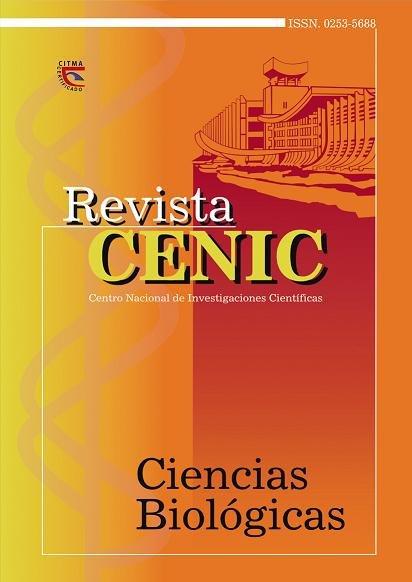Morfometría de la estría vascular y el órgano de Corti ante el daño por kanamicina
Abstract
Morphological alterations induced by aminoglycosides on the stria vascularis have not been extensively
studied. This non-sensorial structure plays an important role in audition, since it is responsible for the generation of
the endocochlear potential needed for hair cells of the organ of Corti´s performance. The objective of this work was to
study the temporal changes induced by kanamycin on stria vascularis and organ of Corti´s areas. Cochleae from 17 adult
Wistar rats (normal hearing and deafened during 4, 8 and 16 weeks) were studied. Deafness was induced by means of
intraperitoneal injections of kanamycin and furosemide. Histological sections were studied by High Resolution Light
Microscopy: Spurr resin′ embedding, semithin sections in the horizontal plane and Stevenel´s blue dying. Stria vascularis
and organ of Corti´s areas were measured in apical, middle and basal regions of the cochlea. Ototoxic treatment caused
reduction of stria vascularis and organ of Corti´s areas. Reduction of organ of Corti´s area was observed in all the groups
of deaf animals. Organ of Corti´s area was smaller as the time of deafness increased. Stria vascularis´ area reduction was
detected only at eighth and sixteenth weeks of deafness. Cochlear base was the most affected region, with significant
reduction of both areas in all the groups of deaf animals. In the eighth week, the two areas were damaged in all cochlear
regions. According to previous results of this working team, in the eighth week also spiral ganglion neuronal density
reduction becomes significant
Downloads

Downloads
Published
How to Cite
Issue
Section
License

This work is licensed under a Creative Commons Attribution-NonCommercial-ShareAlike 4.0 International License.
Los autores que publican en esta revista están de acuerdo con los siguientes términos:
Los autores conservan los derechos de autor y garantizan a la revista el derecho de ser la primera publicación del trabajo al igual que licenciado bajo una Creative Commons Atribución-NoComercial-CompartirIgual 4.0 Internacional que permite a otros compartir el trabajo con un reconocimiento de la autoría del trabajo y la publicación inicial en esta revista.
Los autores pueden establecer por separado acuerdos adicionales para la distribución no exclusiva de la versión de la obra publicada en la revista (por ejemplo, situarlo en un repositorio institucional o publicarlo en un libro), con un reconocimiento de su publicación inicial en esta revista.
Se permite y se anima a los autores a difundir sus trabajos electrónicamente (por ejemplo, en repositorios institucionales o en su propio sitio web) antes y durante el proceso de envío, ya que puede dar lugar a intercambios productivos, así como a una citación más temprana y mayor de los trabajos publicados (Véase The Effect of Open Access) (en inglés).














